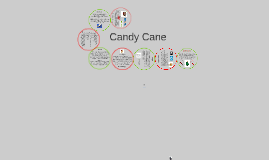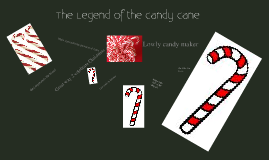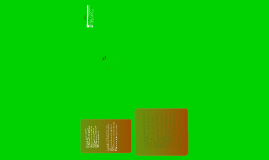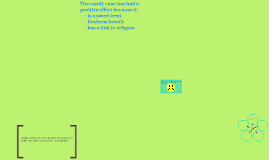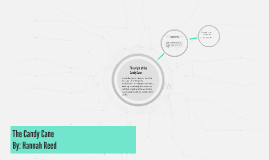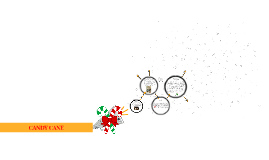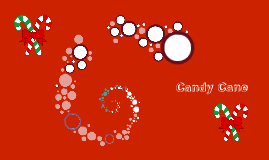Candy Cane
Transcript: The Candy Cane Where Does It Come From? Fast Facts Goes back 350 years National candy cane day is celebrates on December 26 in the United States. original candy was straight and completely white in color. Over 1.76 billion candy canes are made each year. The biggest candy cane ever made was 36 feet 7 inches. Christmas cards after 1900 showed illustrations of striped candy canes. candy-makers added peppermint and wintergreen flavors to their candy canes Nearly 2 billion candy canes will be sold in the four weeks before Christmas and Hanukkah. This Food Is used today by: Putting them in hot chocolat Adding to cakes Putting the flavoring in chocolat Different flavoring in the candy canes not just pepermint Different kinds of pepperment candies are also inspired by the candy cane Nutrients Pop Size: 4.50 oz % DailyValue Serving Size: 1/8 stick (15 grams) Calories: 59 Total Fat: 0 grams 0% Trans Fat: 0 grams n/a Sodium: 0mg 0% Total Carbs: 15 grams 5% Sugars: 12 grams n/a Protein: 0 grams n/a Ingredients: Sugar, Corn Syrup, Natural Flavor, Color Added (Includes Red 40). Store in a cool dry place. This product does not contain peanuts, tree nuts, milk, eggs, wheat, soy, or gluten. It has been manufactured on dedicated equipment. There is a trace amount of soy oil in the lubricant that we use in our cooking kettles. This soy oil has been refined, bleached, and deodorized and all of the proteins have been removed. Myths Many years ago, a candy maker wanted to make a candy at Christmas time that would serve as a witness to his Christian faith. He wanted to incorporate several symbols for the birth, ministry and death of Jesus. He began with a stick of pure white hard candy; white to symbolize the Virgin Birth and the sinless nature of Jesus; hard to symbolize the solid rock, the foundation of the Church; firmness to represent the promise of God. The candymaker made the candy in the form of a "J" to represent the name of Jesus, who came to earth as our Savior. He thought it could also represent the staff of the Good Shepherd, with which he reached down into the ditches of the world to lift out the fallen lambs who, like all sheep, have gone astray. . Thinking that the candy was somewhat plain, the candymaker stained it with red stripes. He used three small stripes to show the stripes of the scourging Jesus received, by which we are healed. The large red stripe was for the blood shed by Christ on the cross so that we could have the promise of eternal life. Unfortunately, the candy became known as a candy cane - a meaningless decoration seen at Christmas time. But the true meaning is still there for those who have eyes to see and ears to hear. Sources http://www.fatsecret.com/calories-nutrition/lifesavers/candy-canes http://inventors.about.com/od/foodrelatedinventions/a/candy_canes.htm http://www.alighthouse.com/candycane.htm http://www.candycanefacts.com/facts/ http://www.noelnoelnoel.com/trad/candycane.html The shape The stripes The coloring The candy The taste Now who wants some candy canes? They become what we see and use today. 1950's By Felicia Mykes 1670 1990's Bob’s brother-in-law, Gregory Keller, a Catholic priest, invented a machine to automate candy cane production. 1920's Bob McCormack began making candy canes as special Christmas treats for his children, friends and local shopkeepers in Albany, Georgia. German-Swedish immigrant named August Imgard of Wooster, Ohio, decorated a small blue spruce with paper ornaments and candy canes. 1847 The choirmaster at the Cologne Cathedral handed out sugar sticks among his young singers to keep them quiet during the long Living Creche ceremony.






